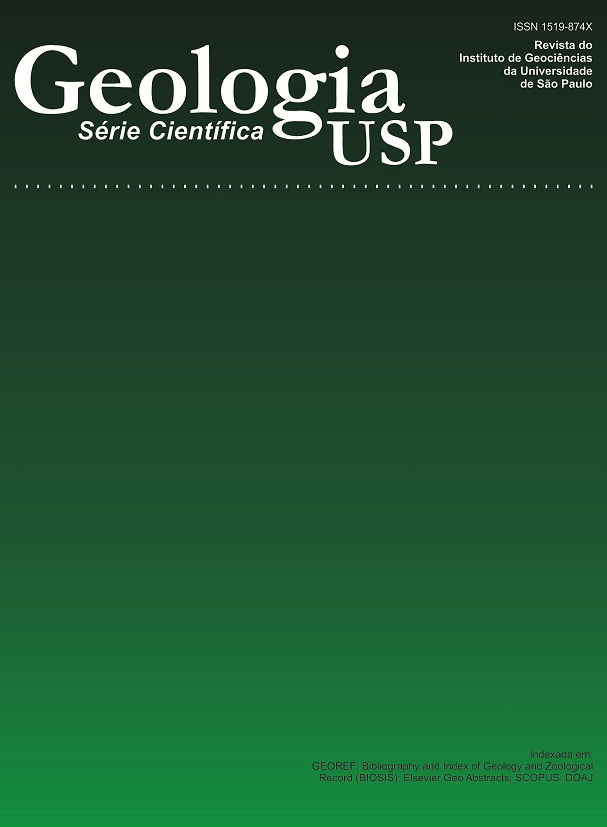Provenance analysis of the Guaritas Group (RS) conglomeratic sandstones: implications for the paleoclimate and paleogeography of the Eocambrian Central Camaquã sub-basin
DOI:
https://doi.org/10.5327/Z1519-874X2013000200007Keywords:
Guaritas Group, Provenance analysis, Pebbles, Paleogeography, PaleoclimateAbstract
The Camaquã Supergroup, located in the central-south region of Rio Grande do Sul, Brazil, constitutes a rift-type post-orogenic sedimentary basin, whose deposition occurred in a continental environment between the Ediacaran and the Eocambrian. The upper succession of the Camaquã Supergroup is represented by the Guaritas Group, a unit formed by fluvial, eolian and alluvial fan deposits that keeps important records of the sedimentation right after the end of the neoproterozoic orogenesis that gave rise to the Gondwana supercontinent. The objective of the present work was to apply sedimentary provenance analysis in conglomeratic arenites and conglomerates of the Guaritas Group, in order to explore the climatic and tectonic evolution history of this unit. Based on the pebble compositional data, two main source areas were recognized for the deposits of this unit, a more distal one located to the north, related with a trunk river system parallel to the basin main axis, and a more proximal one located to the east, related to transversal fluvial systems and alluvial fans at the border of the basin. The comparison of the provenance data with previous studies on facies and paleocurrents suggests that, during the entire evolution of the east border of the basin, there was a same transversal fluvial system, whose catchment area suffered significative reductions due to the reactivation of the east border fault during the deposition of the Varzinha and Pedra Pintada Formations. The Serra do Apertado Formation, the upper unit of Guaritas Group, shows a high correlation between the variation of quartzose and non quartzose pebbles composition, and it was attributed to a variation between more humid and more arid climatic conditions.Downloads
Download data is not yet available.
Downloads
Published
2013-06-01
Issue
Section
Articles
License
Authors who publish in this journal shall comply with the following terms:
- Authors keep their copyright and grant to Geologia USP: Série Científica the right of first publication, with the paper under the Creative Commons BY-NC-SA license (summary of the license: https://creativecommons.org/licenses/by-nc-sa/4.0 | full text of the license: https://creativecommons.org/licenses/by-nc-sa/4.0/legalcode) that allows the non-commercial sharing of the paper and granting the proper copyrights of the first publication in this journal.
- Authors are authorized to take additional contracts separately, for non-exclusive distribution of the version of the paper published in this journal (publish in institutional repository or as a book chapter), granting the proper copyrights of first publication in this journal.
- Authors are allowed and encouraged to publish and distribute their paper online (in institutional repositories or their personal page) at any point before or during the editorial process, since this can generate productive changes as well as increase the impact and citation of the published paper (See The effect of Open Access and downloads on citation impact).
How to Cite
Godinho, L. P. de S., Almeida, R. P. de, Marconato, A., Santos, M. G. M. dos, & Fragoso-Cesar, A. R. S. (2013). Provenance analysis of the Guaritas Group (RS) conglomeratic sandstones: implications for the paleoclimate and paleogeography of the Eocambrian Central Camaquã sub-basin . Geologia USP. Série Científica, 13(2), 123-144. https://doi.org/10.5327/Z1519-874X2013000200007





